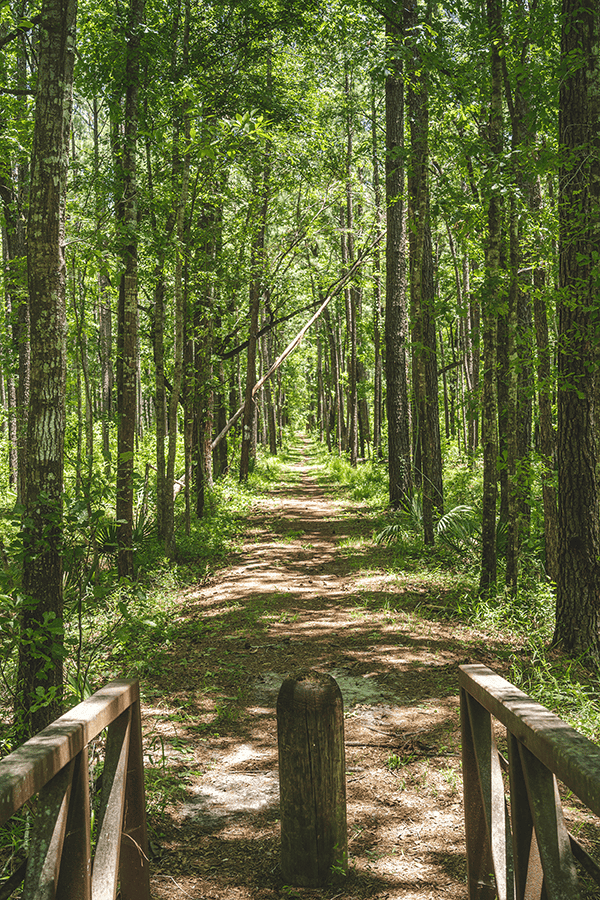The Palmetto Trail has been in existence since 1994 - at least in sections. Over 600 of the 800 planned kilometres have now been "completed (as of 2022)." It will connect state and national parks, nature reserves, War of Independence sites, indigenous trails and towns for hikers and backpackers.
For a quick test, you can start at Buck Hall Recreation Area on the Atlantic Coast, the south-eastern starting point of the Palmetto Trail. You pass Awendaw, where the Swamp Fox Passage (famous for the hideouts of war hero and "swamp fox" Francis Marion) is integrated into the trail, which you can follow for 75 kilometres through the Francis Marion National Forest to Lake Moultrie. This would be a two to three day hike, where you rarely meet people and where there is only one place to drink water in between.
A shorter alternative is the approximately 10 km hike from the trailhead near Awendaw to the Halfway Creek campground. At the beginning, the trail leads through dense stands of reeds up to 3 m high and then continues straight ahead for kilometres along an old railway line. Despite the dried-up streams, the surrounding forest is bright green. Butterflies, woodpeckers, lizards, dragonflies and spider webs accompany the sometimes monotonous passages through older stands of swamp pine, which alternate with hardwood meadows and swamps as well as evergreen shrub moors. The eponymous palmetto palm, which likes to grow near the coast or in savannah-like surroundings and tolerates flooding, is always present in between. In the rain, this route certainly has a completely different character, which can only be mastered with the right equipment. At Halfway Creek, we find another little treasure: one of 25 Carolina Bays that exist in the 105,000-hectare Francis Marion National Forest.







